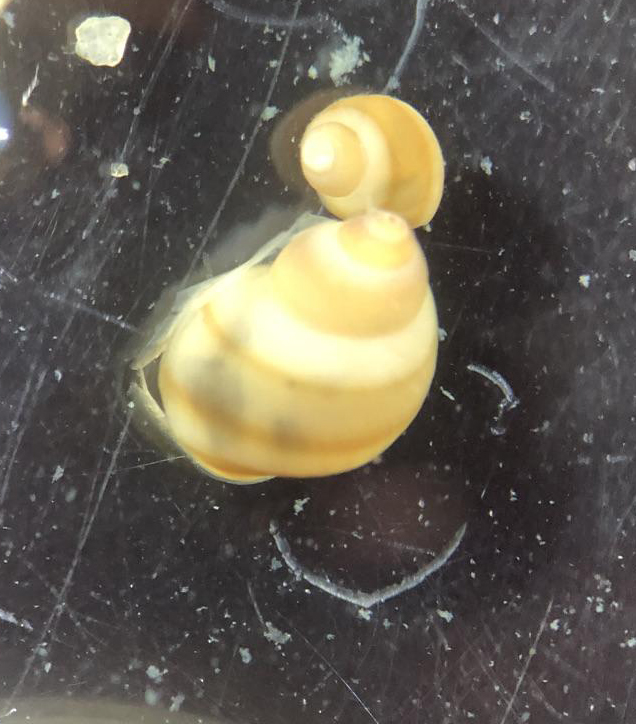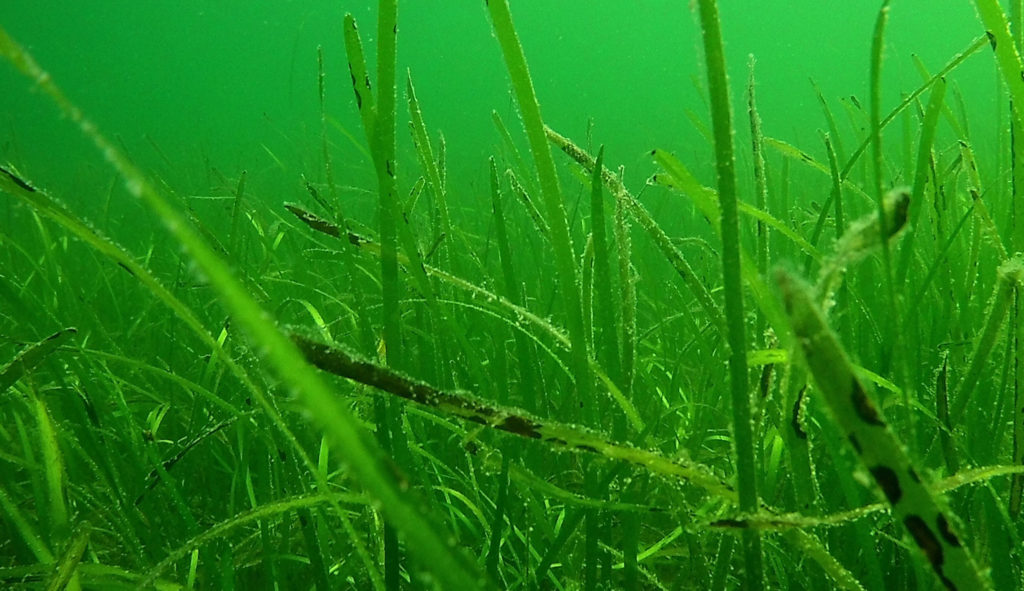by Taylor Wev

Seagrass meadows play a vital role in protecting the health and integrity of coastal communities around the world. However, some coastal seagrass meadows can be prone to collapse due to seagrass wasting disease. A study in the journal Ecology looked at the disease in meadows of eelgrass (Zostera marina) along the Pacific Coast of North America. It revealed that a key driver may be one of the grasses’ closest animal companions.
“Eelgrass is a very widespread and important habitat all over the Northern hemisphere,” said Emmett Duffy, marine biologist at the Smithsonian Environmental Research Center (SERC). Duffy coauthored the study as part of his work leading the Marine Global Earth Observatory network.
Eelgrass is a foundation species in many marine ecosystems. It protects seabeds from erosion, recaptures carbon and provides food and shelter to a wide variety of marine organisms. Seagrass wasting disease, caused by the slime mold Labyrinthula zosterae, has had devastating impacts on seagrass meadows in the past. In the 1930s, it eradicated nearly 90 percent of North American Atlantic meadows. The disease leads to dark lesions, stunted growth, reduced sugar stores, weakened root systems and—eventually—the death of the plant.
“We know that wasting disease in eelgrass in particular can cause really large-scale effects, like the total collapse of ecosystems,” said lead author Lillian Aoki, a former SERC intern who is now an assistant professor at the University of Oregon. “So our hope was to explore exactly what the conditions are that create those large-scale outbreaks.”

Temperature, salinity and other environmental factors contribute heavily to the spread of wasting outbreaks. But the data from this project revealed a much smaller culprit may be playing a role. A variety of small marine invertebrates live and feed on the shoots of eelgrass. Some aid the grasses, by eating away algae and areas of infected plant material. But one type of grazer plays a more ambiguous role.
For this study, the team collected hundreds of samples of epifaunal grazers from diseased meadows along North America’s Pacific Coast. Many had never been properly identified before. Carmen Ritter, a former SERC technician, spearheaded the task of sorting and identifying these samples. Her efforts provided some much-needed insight into what these animals were, and what roles they play in seagrass health.

One community of grazers stood out: small snails belonging to the Lacuna genus. While other creatures, like idoteid isopods and amphipod crustaceans, emerged as key species that feed on diseased plants, wasting disease prevalence jumped a full 29 percent with grazing by Lacuna snails. Both prevalence and lesion size increased with higher populations of the snails.
“We had a lot of factors interacting with each other, and trying to figure out the direction of those interactions was tough,” said Ritter. “For me the biggest question was: are these seagrass leaves becoming more diseased because they are being eaten, or are they tastier because they’re diseased?”
Findings from the study suggest that physical damage from Lacuna snails creates increased points of entry for the pathogen. Their grazing is destructive by nature: Lacuna snails consume eelgrass by rasping and scraping along the surface of leaves. This further weakens the plant tissue through physical damage and resource depletion, which then creates more opportunities for infection.
The authors say there is still much to understand about the influence of grazers. But scientists are determined to find more ways to protect these vulnerable ecosystems from disease and collapse. One goal of the project is to develop mathematical models that help pinpoint at-risk meadows and further analyze the impact of these snails on seagrass communities.
“I’ve worked with marine plants and grazers for many years… and have learned that these little creatures have a lot of tricks up their sleeves,” said Duffy. “Biological interactions like this can be just as important as climate and other big environmental drivers in how ecosystems work. These tiny animals that no one pays attention to can also have major impacts.”
The full study, “Seagrass wasting disease prevalence and lesion area increase with invertebrate grazing across the northeastern Pacific,” is available at https://esajournals.onlinelibrary.wiley.com/doi/10.1002/ecy.4532
Learn More:
Eelgrass Wasting Disease Has New Enemies: Drones & Artificial Intelligence
In Florida’s Oceans, It’s DNA vs. Disease
Slime Nets and Other Invasive Parasites Unmasked, Thanks to DNA

